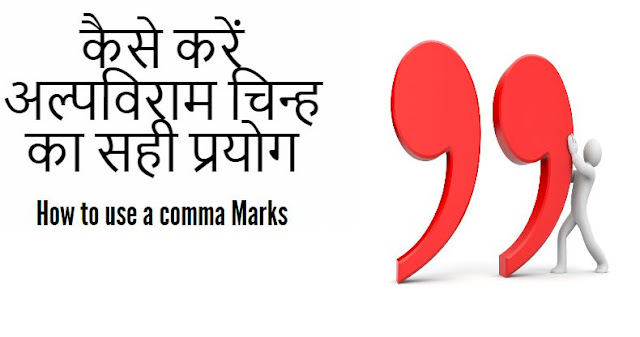कोमा चिन्ह हिंदी और अंग्रेजी में – Comma Marks in Hindi and English

Contents
- 1 कोमा चिन्ह हिंदी और अंग्रेजी में – Comma Marks in Hindi and English
- 2 1. Uses of Comma in English
- 2.1 1.1 To Separate Items in a List
- 2.2 1.2 Before a Coordinating Conjunction (FANBOYS: For, And, Nor, But, Or, Yet, So)
- 2.3 1.3 After Introductory Words or Phrases
- 2.4 1.4 To Set Off Non-Essential Information
- 2.5 1.5 To Separate Direct Speech from the Sentence
- 2.6 2. Uses of Comma in Hindi (अल्पविराम ,)
- 2.7 2.1 अलग-अलग चीजों को अलग करने के लिए
- 2.8 2.2 संयोजन (और, लेकिन, क्योंकि) से पहले
- 2.9 2.3 वाक्य के प्रारंभिक भाग को अलग करने के लिए
- 2.10 2.4 संबोधन (किसी को पुकारते समय)
- 2.11 2.5 प्रत्यक्ष कथन को अलग करने के लिए
- 2.12 Conclusion:
कोमा चिन्ह हिंदी और अंग्रेजी में – Comma Marks in Hindi and English
Comma कोमा – अल्प विराम (,)
Comma (,) in English and Hindi (अल्पविराम ,)
A comma ( , ) is a punctuation mark used to indicate a pause, separate elements in a sentence, or clarify meaning. In Hindi, it is called “अल्पविराम” and is used similarly to English.
1. Uses of Comma in English
1.1 To Separate Items in a List
Example: I bought apples, bananas, oranges, and grapes.
(Comma separates the items in the list.)
1.2 Before a Coordinating Conjunction (FANBOYS: For, And, Nor, But, Or, Yet, So)
Example: She wanted to go out, but it was raining.
(Comma separates two independent clauses.)
1.3 After Introductory Words or Phrases
Example: After dinner, we went for a walk.
(Comma separates the introductory phrase.)
1.4 To Set Off Non-Essential Information
Example: My brother, who lives in Mumbai, is coming to visit.
(The phrase “who lives in Mumbai” is extra information.)
1.5 To Separate Direct Speech from the Sentence
Example: She said, “I will call you tomorrow.”
(Comma separates the reporting verb from the quoted speech.)
2. Uses of Comma in Hindi (अल्पविराम ,)
2.1 अलग-अलग चीजों को अलग करने के लिए
उदाहरण: मैंने किताबें, पेन, कॉपी और बैग खरीदे।
(सूची में वस्तुओं को अलग करने के लिए अल्पविराम प्रयोग किया जाता है।)
2.2 संयोजन (और, लेकिन, क्योंकि) से पहले
उदाहरण: वह स्कूल गया, लेकिन शिक्षक वहाँ नहीं थे।
(अल्पविराम “लेकिन” से पहले आता है।)
2.3 वाक्य के प्रारंभिक भाग को अलग करने के लिए
उदाहरण: खाने के बाद, हम पार्क में गए।
(आरंभिक भाग को मुख्य वाक्य से अलग करने के लिए अल्पविराम प्रयोग हुआ।)
2.4 संबोधन (किसी को पुकारते समय)
उदाहरण: रामू, जरा पानी लाना।
(किसी व्यक्ति को संबोधित करते समय अल्पविराम प्रयोग होता है।)
2.5 प्रत्यक्ष कथन को अलग करने के लिए
उदाहरण: उसने कहा, “मैं कल आऊँगा।”
(संवाद को बाकी वाक्य से अलग करने के लिए अल्पविराम आता है।)
Conclusion:
The comma (अल्पविराम,) is an important punctuation mark in both English and Hindi. It improves clarity, separates ideas, and organizes text effectively.
Would you like more examples or clarification?
